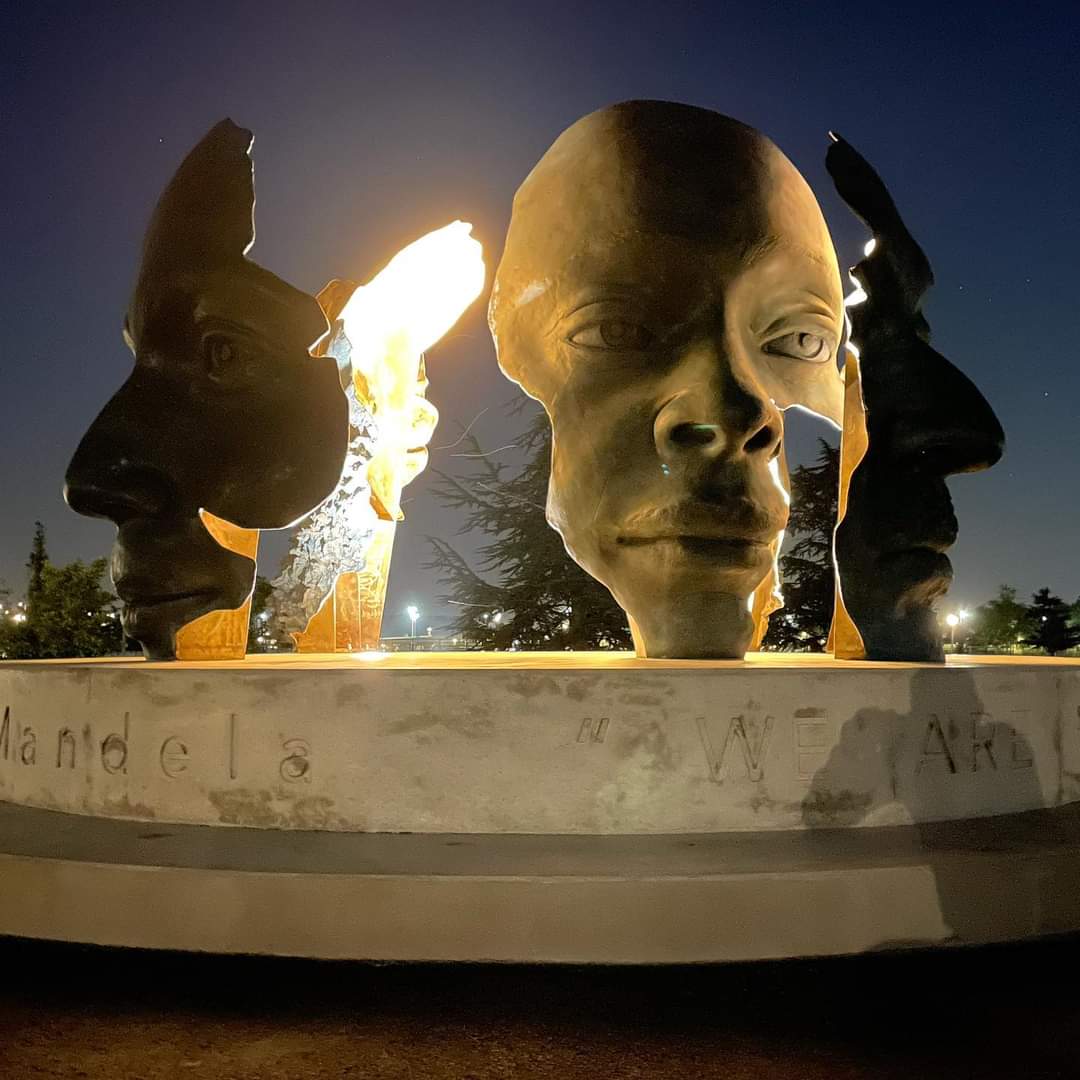On Sunday 5 September, the Nelson Mandela Memorial was unveiled in the South East district of Amsterdam. With over 170 nationalities, the South East is the most multicultural neighbourhood in the city.
The creator of the work is South African artist Mohau Modisakeng. The memorial differs from all other Mandela monuments in the world. It is not a statue because, in the words of Modisakeng in an interview with Dutch daily Trouw 'a larger-than-life Mandela does not make one think'. His memorial features seven fractured faces, all based on portraits that the artist made in the district. Modisakeng in the same interview: ‘I wanted to get away from that constantly repeated iconic image of the Big Man, the saint, the hero’. Referring to the Apartheid era, Modiasakeng says: ‘In South Africa, for a very long time, it was not possible to see or reproduce Mandela's appearance. But his ideas did reach people. So they formed an image of him, long before the first statue was made. I wanted to focus on that image – of his ideas, and of their meaning for the residents of this neighbourhood: a community of people from all corners of the world.’
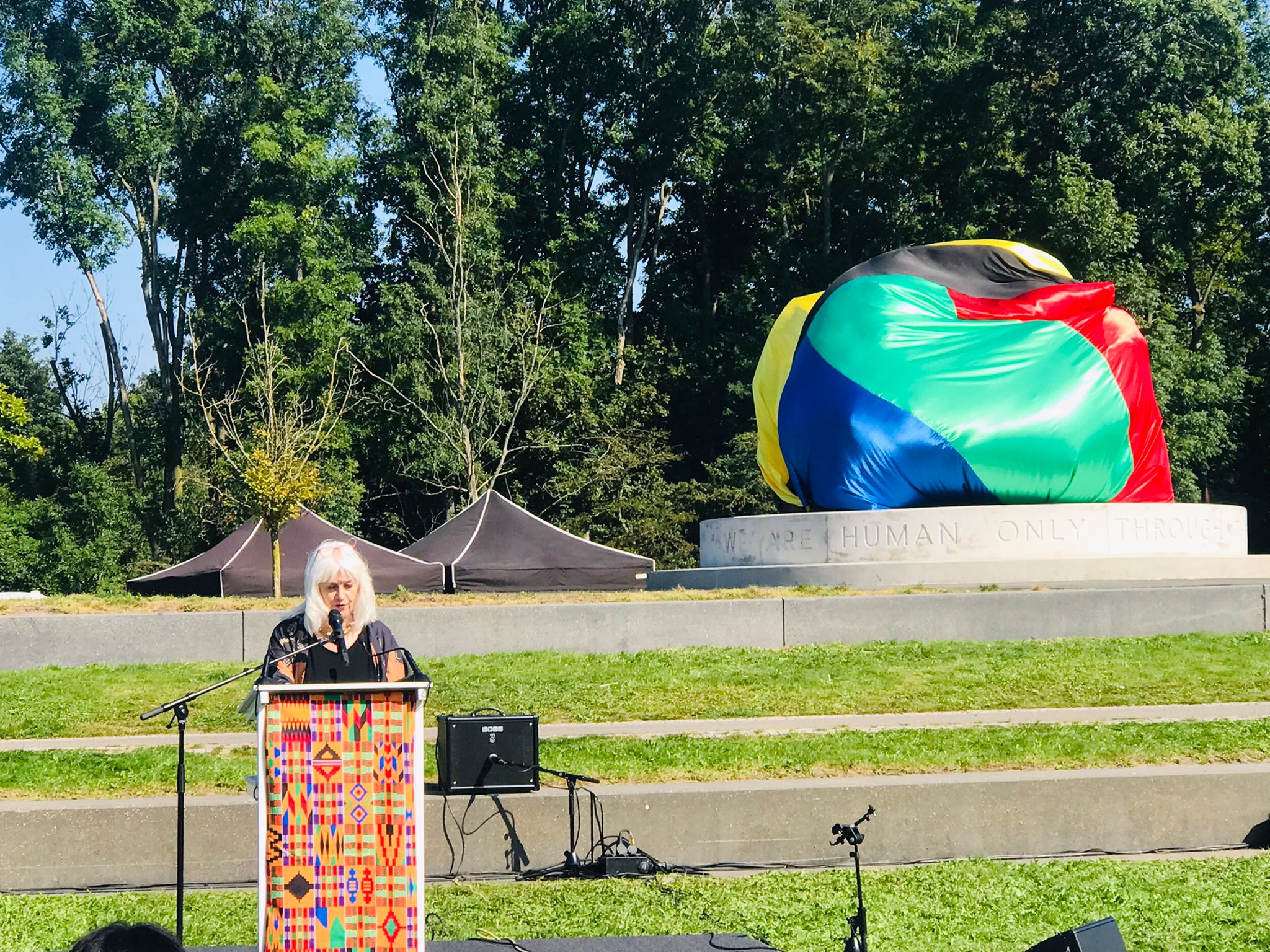
In a speech at the unveiling ceremony, which was attended by hundreds of people, writer and former president of the Anti-Apartheid Movement in the Netherlands Conny Braam referred to that idea of community. It was precisely the kinship Mandela felt with the people and with the liberation movement he led that enabled him to achieve great success, according to Braam. In Mandela, the combativeness of a man who took up arms when he saw no alternative and who entered into dialogue with his enemies, come together.
In the summer of 2020, the Nelson Mandela Park, where the memorial is located, was the site of a Black Lives Matter gathering of over eleven thousand people. It was a protest that resonated in the contributions of more speakers, such as former professional footballer Clarence Seedorf and the Amsterdam mayor Femke Halsema. The latter referred, among other things, to the official apology the city council recently made for its major involvement in slavery.
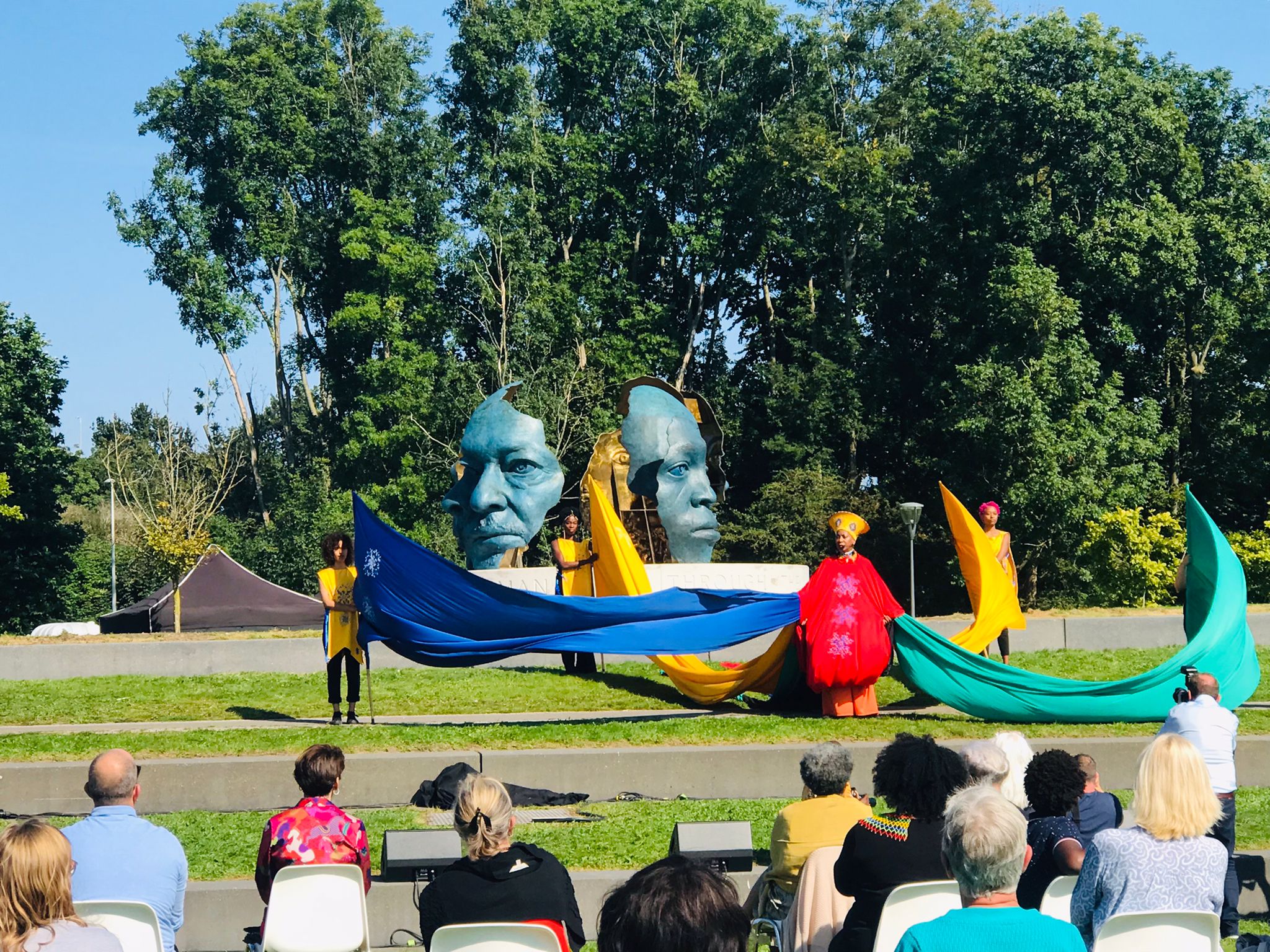
The audience responded with great approval to the speeches and performances, including those by Sites of Memory, the theatre production company directed by Jennifer Tosch and Katy Streek. After the official ceremony, many people gathered around and in the memorial. Among them the seven local residents who modelled for Modisakeng's work.
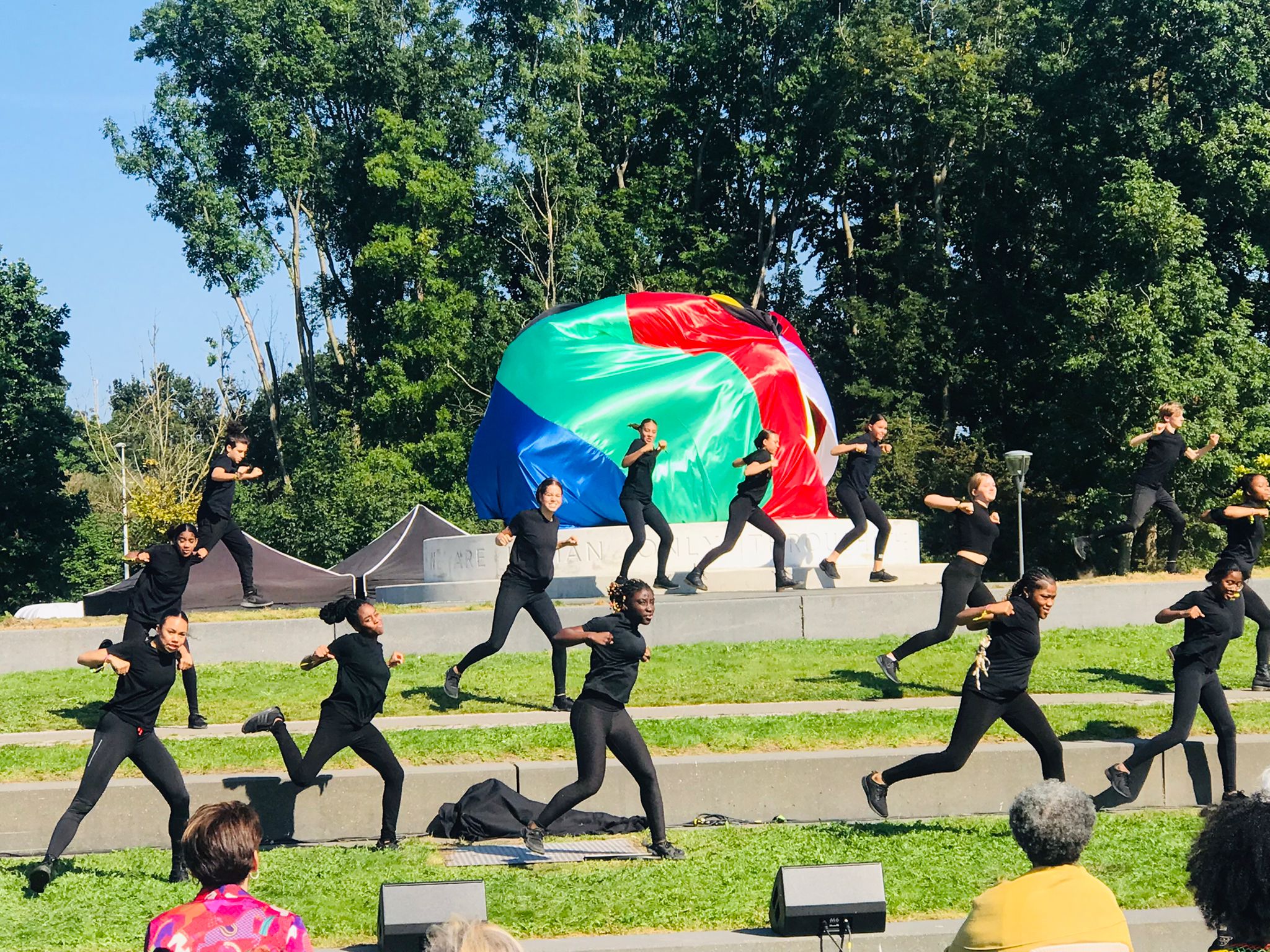
As part of its #ImagineMandela programme, ZAM actively supported the development of the memorial and various events leading up to the unveiling. Together with chairman Noraly Beyer, photographer Hans Mooren, singer songwriter Joya Mooi and artist Charles Landvreugd, ZAM Editor-in-Chief Bart Luirink formed the committee that selected the artist. Together with the Centrum voor Beeldende Kunst Zuidoost (Centre for Visual Arts Southeast), ZAM organised a public artist talk and livecast and contributed to the exhibition A Tribute to Nelson Mandela on view until 15 October in New Metropolis Zuidoost. An essay by Hlonipha Mokoena on the meaning of Modisakeng's work, recently published by ZAM, will also be part of a booklet on 'the making of the memorial' that CBK Zuidoost is putting together.
With the memorial, Amsterdam now has a fourth monument that does justice to the city's diversity. With the slavery monument, the memorial that keeps alive the memory of the brutal murder of Kerwin Duinmeijer and, not far from the Mandela monument, the statue of the Surinamese independence fighter Anton de Kom. In the Amsterdam headquarters of the Dutch Federation of Unions, a room was recently named after the Surinamese trade activist Louis Doedel. All this creates an environment that does more justice to our shared history.
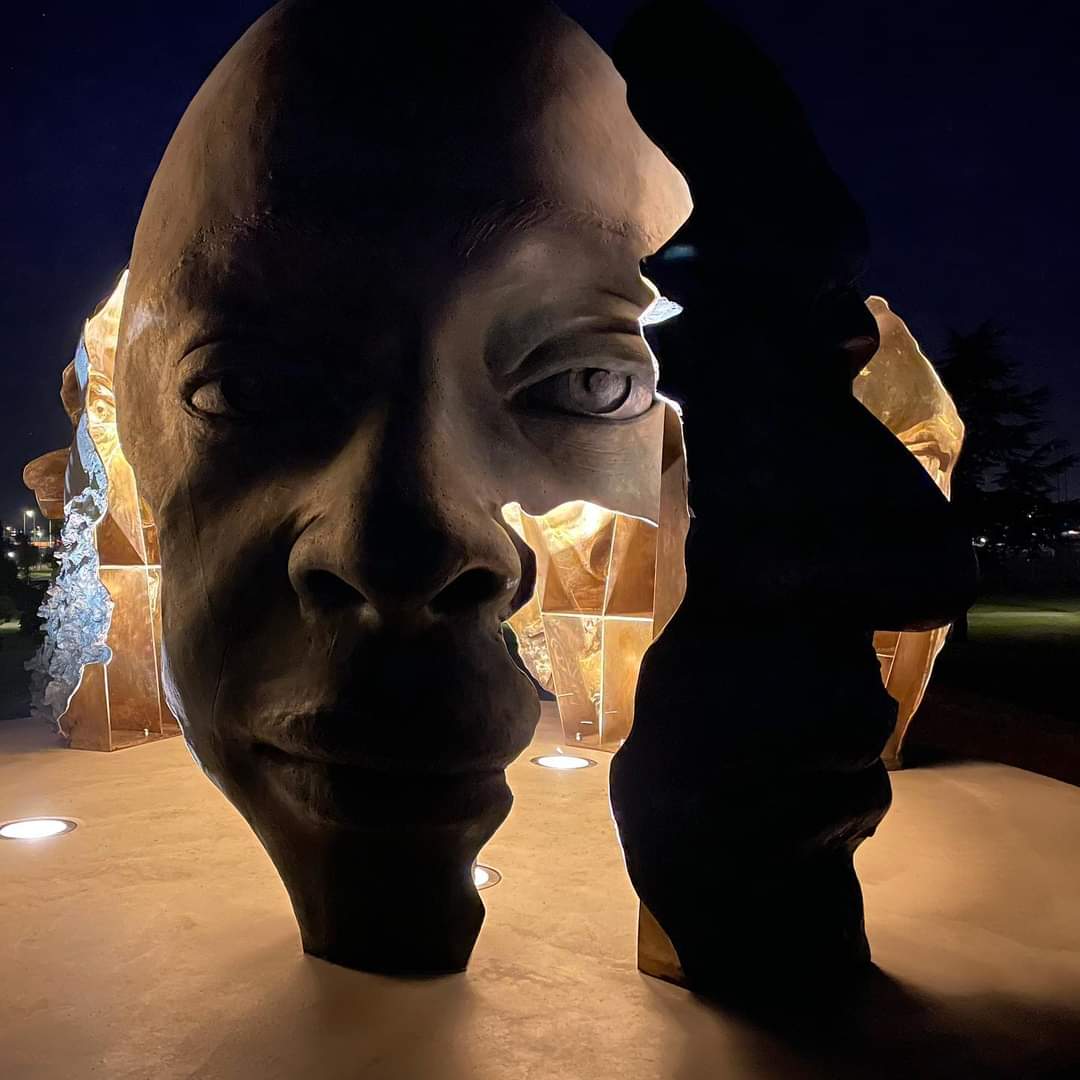
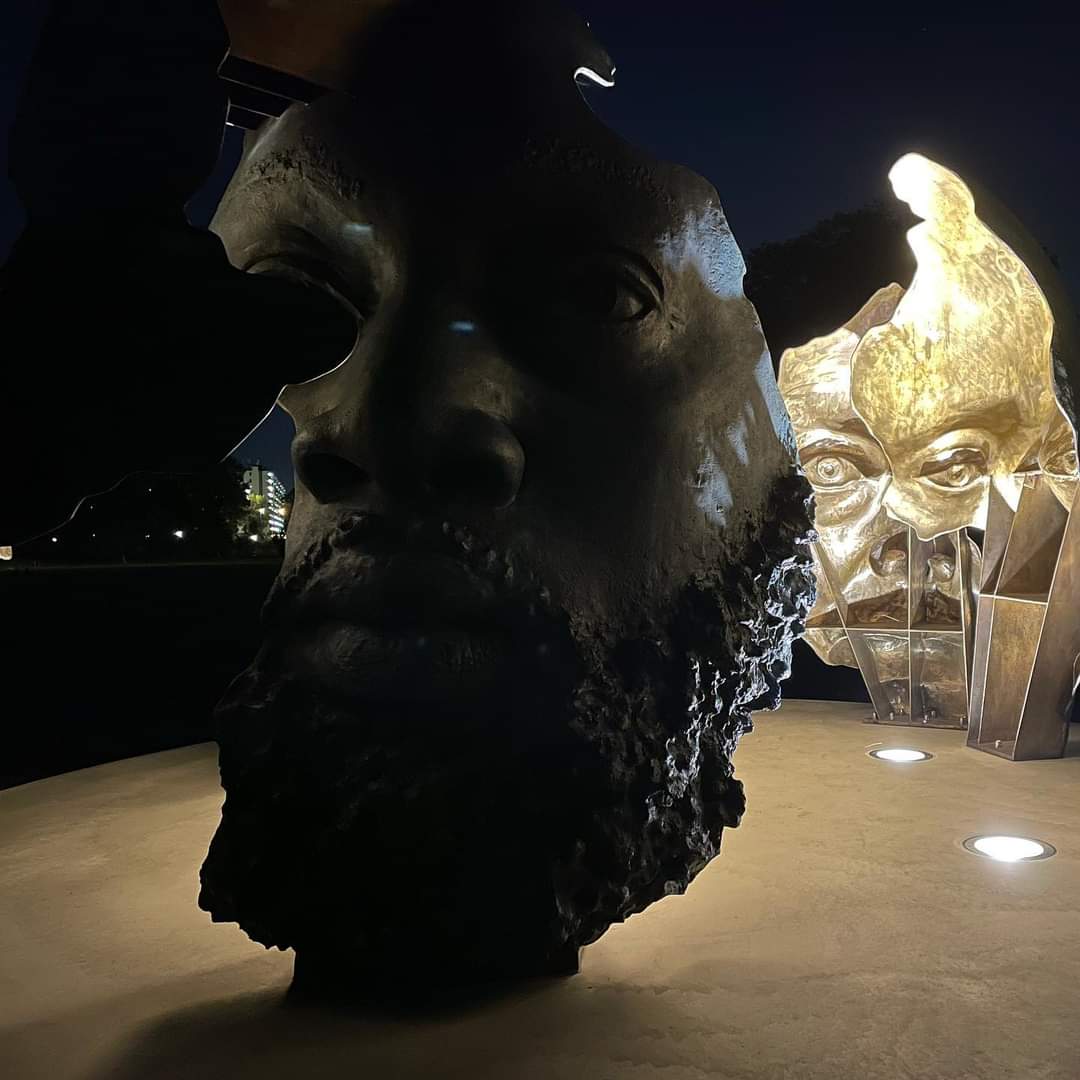
*
Op zondag 5 september werd in Amsterdam Zuidoost, met ruim 170 nationaliteiten de meest multiculturele wijk van de stad, een gedenkteken voor Nelson Mandela onthuld. Maker: de Zuid-Afrikaanse kunstenaar Mohau Modisakeng. Het werk is uniek omdat het verschilt van alle andere Mandela monumenten in de wereld. Het is geen standbeeld omdat, in de woorden van Modisakeng in een interview met Dutch daily Trouw ‘een meer dan levensgrote Mandela niet tot nadenken stemt’. Zijn gedenkteken voert zeven fractured faces ten tonele, allen gebaseerd op portretten die de kunstenaar in de wijk maakte. Modisakeng in hetzelfde interview: “Ik wilde wegkomen van dat steeds herhaalde iconische beeld van de Grote Man, de heilige, de held.” Verwijzend naar de apartheidstijd zegt Modiasakeng: “In Zuid-Afrika was het heel lang niet mogelijk om Mandela’s uiterlijk te zien of te reproduceren. Maar zijn ideeën bereikten de mensen wel. Zo vormden ze zich een beeld van hem, lang voordat het eerste standbeeld van hem gemaakt werd. Ik wilde me focussen op dat beeld – van zijn ideeën, en van hun betekenis voor de bewoners van deze wijk: een gemeenschap van mensen uit alle hoeken uit de wereld.”
In een speech tijdens de onthullingsceremonie, die door vele honderden mensen werd bijgewoond, refereerde schrijfster en voormalig voorzitter van de Anti-Apartheids Beweging Nederland Conny Braam aan dat idee van gemeenschap. Juist de verwantschap die Mandela voelde met de mensen en met de bevrijdingsbeweging die hij aanvoerde stelde hem in staat om grote successen te boeken, aldus Braam. In Mandela komen de strijdbaarheid van een man die de wapens oppakte toen hij geen alternatief meer zag én het gesprek met zijn vijanden aanging bij elkaar.
In de zomer van 2020 was het Nelson Mandelapark, waar het gedenkteken is geplaatst, de plek waar ruim elfduizend mensen deelnamen aan een Black Lives Matter bijeenkomst. Het was een protest dat resoneerde in de bijdragen van meer sprekers, zoals voormalig profvoetballer Clarence Seedorf en de Amsterdamse burgemeester Femke Halsema. De laatste verwees onder meer naar de excuses die het het stadsbestuur onlangs maakte voor de grote betrokkenheid bij de slavernij.
Het publiek reageerde met grote instemming op de speeches en de optredens, onder meer van Sites of Memory, de theaterproductie van Jennifer Tosch en Katy Streek. Na afloop van de officiële ceremonie verzamelden zich veel mensen rond en in het gedenkteken. Daarbij waren ook de zeven wijkbewoners die model stonden Modisakeng’s werk.
In het kader van zijn #ImagineMandela programma steunde ZAM actief de ontwikkeling van het gedenkteken en verschillende evenementen in de aanloop naar de onthulling. Samen met voorzitter Noraly Beyer, fotograaf Hans Mooren, singer songwriter Joya Mooi en kunstenaar Charles Landvreugd vormde ZAM hoofdredacteur Bart Luirink de commissie die de kunstenaar selecteerde. Samen met het Centrum voor Beeldende Kunst Zuidoost organiseerde ZAM een publieke artist talk en livecast en droeg bij aan de expositie A Tribute to Nelson Mandela die nog tot 15 oktober in New Metropolis Zuidoost te bezichtigen is. Een essay van Hlonipha Mokoena over de betekenis van Modisakeng’s werk, dat ZAM publiceerde, zal ook deel uitmaken van een boekje over ‘the making of the memorial’ dat CBK Zuidoost samenstelt.
Met het gedenkteken heeft Amsterdam nu een vierde monument dat recht doet aan de diversiteit van de stad. Met het slavernijmonument, het gedenkteken dat herinnering aan de brute moord op Kerwin Duinmeijer in leven houdt en, niet ver van het Mandela monument, het standbeeld van de Surinaamse onafhankelijkheidsstrijder Anton de Kom. In het Amsterdamse hoofdkantoor van de Federatie Nederlandse Vakverenigingen werd onlangs een zaal vernoemd naar de Surinaamse vakbondsactivist Louis Doedel. Zo ontstaat een omgeving die meer recht doet aan onze gedeelde geschiedenis.

